|
Quinn Smithwick |
Camera Culture Group, MIT Media Lab
ACM Transactions on Graphics (Proceedings of SIGGRAPH 2009)
Please see the project wiki for more information

Abstract
We show a new camera based interaction solution where an ordinary camera can detect small optical tags from a relatively large distance. Current optical tags, such as barcodes, must be read within a short range and the codes occupy valuable physical space on products. We present a new low-cost optical design so that the tags can be shrunk to 3mm visible diameter, and unmodified ordinary cameras several meters away can be set up to decode the identity plus the relative distance and angle. The design exploits the bokeh effect of ordinary cameras lenses, which maps rays exiting from an out of focus scene point into a disk like blur on the camera sensor. This bokeh-code or Bokode is a barcode design with a simple lenslet over the pattern. We show that an off-the-shelf camera can capture Bokode features of 2.5 microns from a distance of over 4 meters. We use intelligent binary coding to estimate the relative distance and angle to the camera, and show potential for applications in augmented reality and motion capture. We analyze the constraints and performance of the optical system, and discuss several plausible application scenarios.
Paper
High resolution paper (~5.5MB)
Low resolution paper (~700KB)
Video
Click here for the HD version, or to download the video.
Presentation
Download the complete SIGGRAPH 2009 presentation including all videos (~160MB).
Wiki and FAQ
We have setup a wiki to foster open discussions about the technique and possible collaboration opportunities. Please feel free to edit with questions and suggestions. Please peruse frequently asked questions (FAQ) on the wiki before you contact us with questions.
Application Scenarios
Bokodes open up a whole new range of applications in the areas of tagging, user interaction, machine vision and near field communication not possible with traditional barcodes. Here are mockup sketches of just some possible application scenarios for Bokodes. Please see the paper for more details.
 Street Mapping Services such as Google Streetview: Shops use Bokodes to provide meta information to the trucks as they drive down the street taking pictures. Street Mapping Services such as Google Streetview: Shops use Bokodes to provide meta information to the trucks as they drive down the street taking pictures. |
 Rear projected Microsoft Surface: Tiny Bokodes attached under physical objects placed on the table surface are used to decode position, identiï¬cation, and the angle the object (such as a stylus pen) makes with the surface. Rear projected Microsoft Surface: Tiny Bokodes attached under physical objects placed on the table surface are used to decode position, identiï¬cation, and the angle the object (such as a stylus pen) makes with the surface. |
 Multi-user interaction with a large display in a classroom or conference: The participants use Bokodes with unique identifiers to interact with displays from a distance. Multi-user interaction with a large display in a classroom or conference: The participants use Bokodes with unique identifiers to interact with displays from a distance. |
 Crowd Gaming in Public Spaces: Participangs use Bokodes to control their characters on a shared display from a distance. Crowd Gaming in Public Spaces: Participangs use Bokodes to control their characters on a shared display from a distance. |
Supplemental Material
Browse the technical supplemental materialincluding experimental results and movie clips.
Browse high resolution images and videos including sketches for future scenarios.
Acknowledgements
Thanks to Meng Heng Touch, Donald Eng, and Dan Taub for Bokode prototype construction; Paula Aguilera, Jonathan Williams and Evan Kutsko for the video; Eugene Wu for the sketches; Masahiko Inami, Frank Moss and Andy Lippman for useful discussions; the entire Camera Culture group for their unrelenting support; and the reviewers for their valuable feedback.
This research was supported by research grants from Nokia Research and Samsung. Ramesh Raskar is supported by an Alfred P. Sloan Research Fellowship.
News Coverage
- Barcodes for the rest of us (MIT News)
- more…
